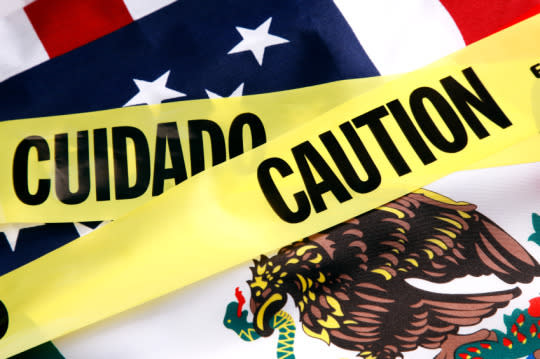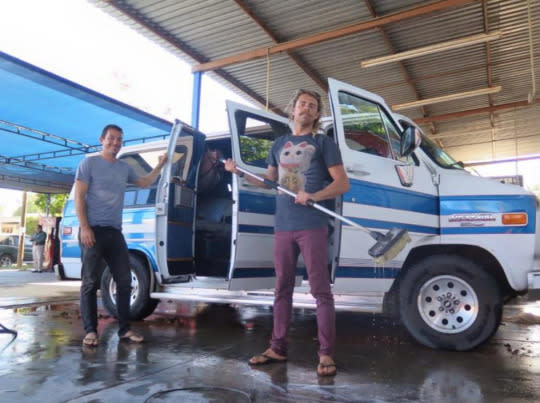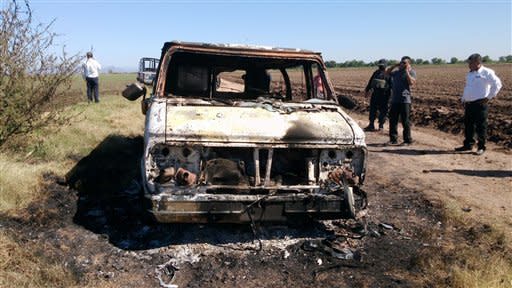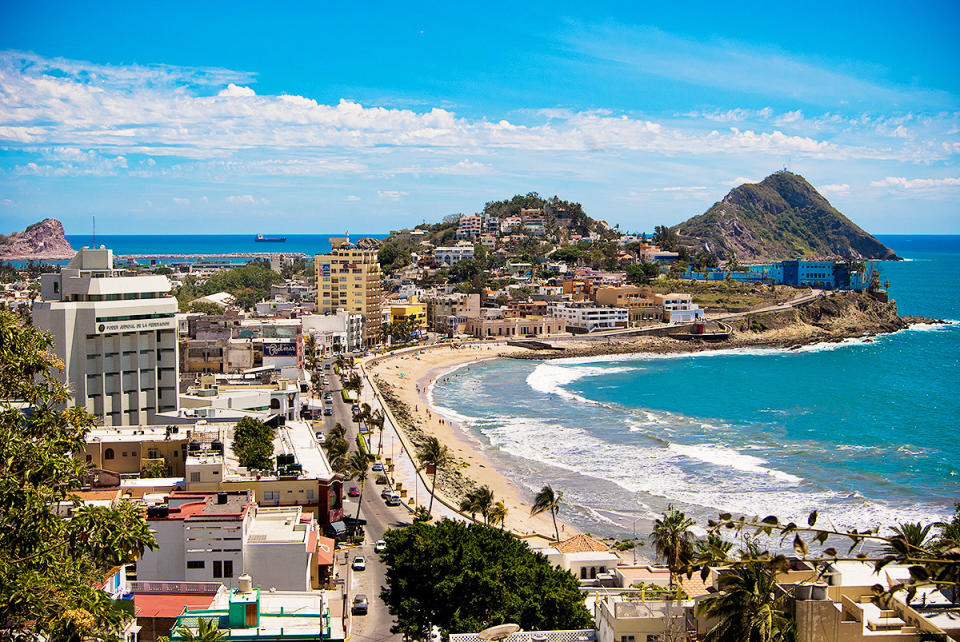Tourists Killed in Mexico... Is it Safe to Go Now?
When it comes to horror stories of tourists in Mexico, we’ve seen lots of hard lessons lately.
Two Australian surfers, Adam Coleman and Dean Lucas, disappeared after last being seen in the Mexico town of Topolobampo on Nov. 20. They were on a surfing vacation and reportedly had been planning to drive south to Guadalajara. On Friday, police announced that they have arrested three people who confessed to killing the tourists and setting them and their van on fire.

It’s important that you exercise caution when traveling to Mexico. (Illustration: iStock)
Earlier this year, Oliver Daniel Caraco, an American expat living in Mexico, reportedly was beaten to death, allegedly while trying to stop a group from stealing his scooter.
Last year, the body of Harry Devert, a 33-year-old New Yorker, was found near Zihuatanejo. Devert had been riding his motorcycle to Brazil for the World Cup. An alleged leader of a drug gang was arrested and accused of the crime.
Also last year, 22-year-old Florida man Craig Taylor was found strangled to death on a dirt road in Punta Sam, north of downtown Cancun.
In all, the State Department says that in 2013 and 2014, a total of 181 Americans were murdered in Mexico.

Australian surfers Dean Lucas and Adam Coleman, who disappeared on vacation in Mexico. (Photo: Facebook).
Making this situation even more worrisome is that the state of Sinaloa — where the van registered to Lucas and Coleman was found — is the home base of the notorious Sinaloa drug cartel, which the U.S. State Department calls “one of Mexico’s most powerful criminal organizations.”
The tragedy has once again highlighted the dangers of travel in Mexico. It’s a danger Coleman’s Mexican girlfriend — Andrea Gomez, whom the two were supposed to meet in Guadalajara — knows well. “I had talked to them about the insecurity [in Mexico],“ she told the Associated Press, "but I never told them about the terrible things that could happen. For that I feel a bit responsible.”
Are tourists ignoring the warnings?
"The risk exists; the threat is there,” Ed Clark, senior security consultant at international risk management firm iJet, tells Yahoo Travel. Nevertheless, it appears Coleman and Lucas were traveling — and, according to CBS News, may have even stopped to camp — in a notoriously dangerous area. The State Department has warned against non-essential travel to Sinaloa, where driving remote roads “is especially dangerous and should be avoided.”

The van registered to Coleman was found in an area well known for drug cartel activity. (Photo: AP)
Clark believes such warnings aren’t heeded by many travelers. “They’ll say, ‘I’ll be OK — I’ll go down there and I’ll be just fine,’” Clark says. “Sometimes it takes some hard lessons to be learned.”
“Years ago, we saw more violence along the border [with the U.S.] — Tamaulipas, Nuevo Laredo, those regions,” Clark tells Yahoo Travel. “Now it seems that more of the violence in the last three or four years is more in the southwest part of Mexico.”
He cites the states of Guerrero — home to the resort towns of Acapulco, Ixtapa, and Zihuatanejo — and Michoacán: ”[Those states] seem to really be the hotbed for violence against tourists, both American and Canadian,“ Clark said. Guerrero is where the body of Harry Devert, that American motorcyclist, was found.
Related: Tourist Destinations That Are More Dangerous Than You Think
Right now, of Mexico’s 31 states and its Federal District (aka Mexico City), eight are under a State Department Travel Warning where all but essential travel is strongly discouraged.
Some of the areas under a warning include Jalisco, home to Puerto Vallarta, and Nayarit, location of the glamorous resort area of Punta Mita. Sinaloa, where the Australian surfers went missing, is one of those states.
In 12 other states, visitors are under a Travel Advisory, where they’re warned to exercise caution.

Mazatlán is a popular tourist destination in Sinaloa, one of the eight Mexican states where all but essential travel is strongly discouraged under a State Department Travel Warning. (Photo: Getty Images)
Clark says isolating the threat in Mexico is difficult because it tends to come from all kinds of sources, depending on where you are. "In some areas the current threat may be from the local police,” Clark says, pointing to alleged police involvement in last year’s disappearance of 43 Mexican students in Guerrero. “In the state of Tamaulipas, it could be an issue with the cartels. Or it could be common criminals.”
Related: 7 Ways to Stay Safe on a Cruise
That’s a particular danger in places like Guadalajara and Mexico City, where “micro-kidnappings” — when robbers grab you, take you around, force you to withdraw all your money from ATMs, and let you go — have been reported.
How to travel in Mexico safely
Despite the headlines, Clark says drug cartels generally aren’t out to kill tourists, especially those driving through their territory. “If you drive to a narco blockade, which is a roadblock set up by drug cartels, they might take your stuff,” he says. “If you have cameras and laptops and phones, they’ll steal those. They’ll take your money. They may slap you around. But they have no interest in killing you because it just draws attention to them."
The exception is if they suspect you may be a threat to them, either by being law enforcement or from a rival gang.

The U.S. State Department repeatedly has warned of violence raging throughout Mexico. (Photo: AP)
"That’s when you see the difference between them committing a petty crime — just beating you up and taking your gear — versus killing you,” he says. (According to The Daily Mail, the man arrested in Devert’s murder says his gang thought the American was a U.S. agent).
Clark says travelers to Mexico should heed some basic safety tips. One is to pay attention to how you’re being perceived. Being mistaken for law enforcement can have tragic consequences. If you’re flashing money and expensive stuff, you may be perceived as a wealthy person (aka, “potential target”).
Clark also suggests not risking your life to protect an object. “If you don’t need it, don’t take it with you,” he says. “Buy a burner telephone. Take your pictures and upload them. That way if someone steals your phone, you’re not really missing anything. Know what is important to protect, which is really your life.”
Putting it all in perspective
The good news is that Mexico remains safe for the vast majority of visitors, especially those who don’t venture outside the popular resort areas. U.S. officials say a total of 25.4 million Americans visited Mexico in 2014, while 100 Americans were reported murdered in that country that same year. That would be a murder rate of .39 per 100,000 Americans, less than half the murder rate of New Hampshire.
And some of Mexico’s most popular tourist destinations — including Quintana Roo, where Cancun, Cozumel, and Playa del Carmen are located — has been given the all clear by the State Department.
Related: Is Mexico Safe for American Tourists Right Now?
Still, no one is claiming New Hampshire is more dangerous to tourists than Mexico. And reports of violence in Mexico may be having an effect. When 2015’s final death tolls come in, Clark expects to see a decline in the number of Americans killed in Mexico compared with last year, as more people heed cautionary tales like that of the two missing Australians.
“I think it’s touched our life,” Clark says of Mexico’s well-known violence problem. “People know a friend or a colleague or a fellow student who was kidnapped or hurt or maybe even murdered. And they certainly have been able to read about it as well. People are being more prudent.”
Clark then adds, “Or they’re going to Florida for spring break instead of Mexico.”
WATCH: What ‘Suspicious Behavior’ Should You Report in the Age of Terrorism?
Follow Yahoo Travel on Facebook, Twitter, Instagram, and Pinterest.

